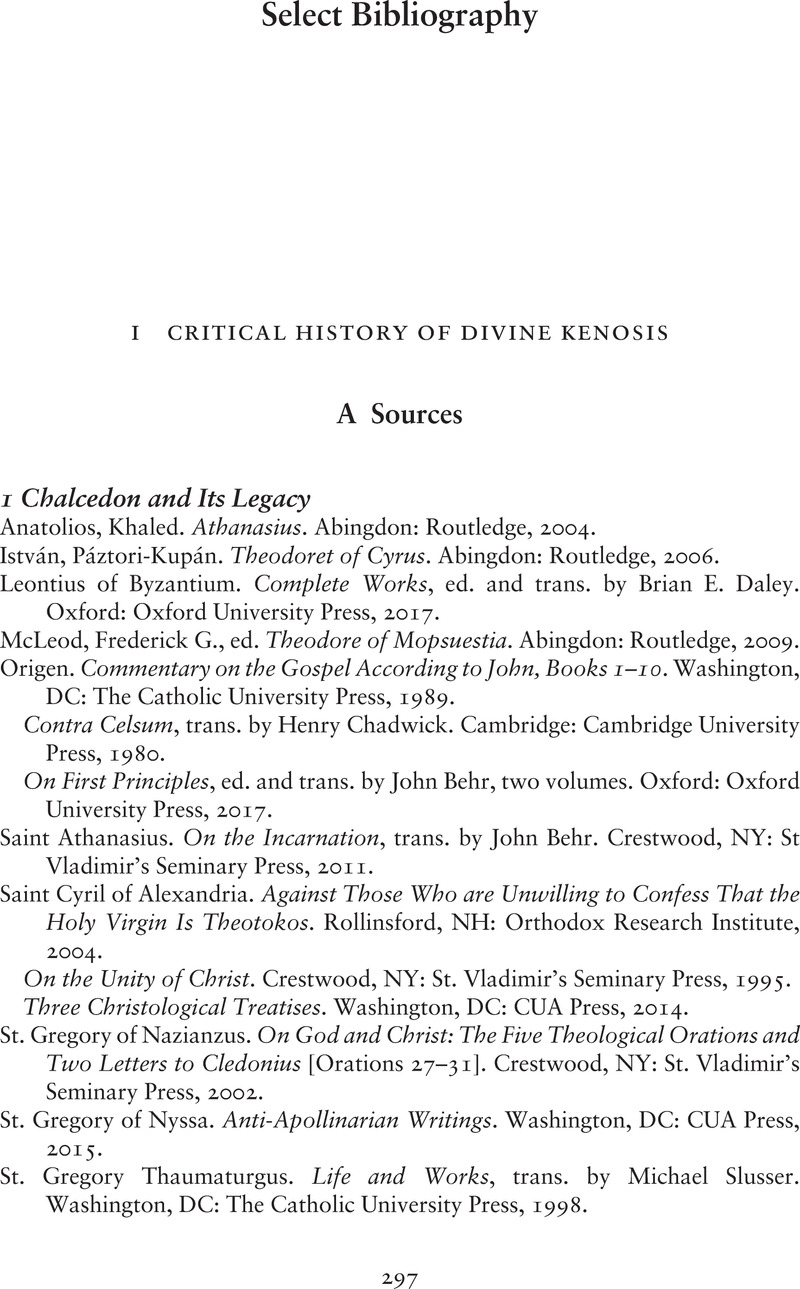Book contents
- The Humility of the Eternal Son
- Current Issues in Theology
- The Humility of the Eternal Son
- Copyright page
- Dedication
- Dedication
- Contents
- Acknowledgments
- Prologue to a Trilogy of Works
- Introduction
- Part I A Critical History of Kenotic Christologies and Their Antecedents:
- Part II Returning to Scripture
- Part III Repairing Chalcedon
- Select Bibliography
- Names Index
- Concepts Index
- References
Select Bibliography
Published online by Cambridge University Press: 19 November 2021
- The Humility of the Eternal Son
- Current Issues in Theology
- The Humility of the Eternal Son
- Copyright page
- Dedication
- Dedication
- Contents
- Acknowledgments
- Prologue to a Trilogy of Works
- Introduction
- Part I A Critical History of Kenotic Christologies and Their Antecedents:
- Part II Returning to Scripture
- Part III Repairing Chalcedon
- Select Bibliography
- Names Index
- Concepts Index
- References
Summary

- Type
- Chapter
- Information
- The Humility of the Eternal SonReformed Kenoticism and the Repair of Chalcedon, pp. 297 - 306Publisher: Cambridge University PressPrint publication year: 2021

